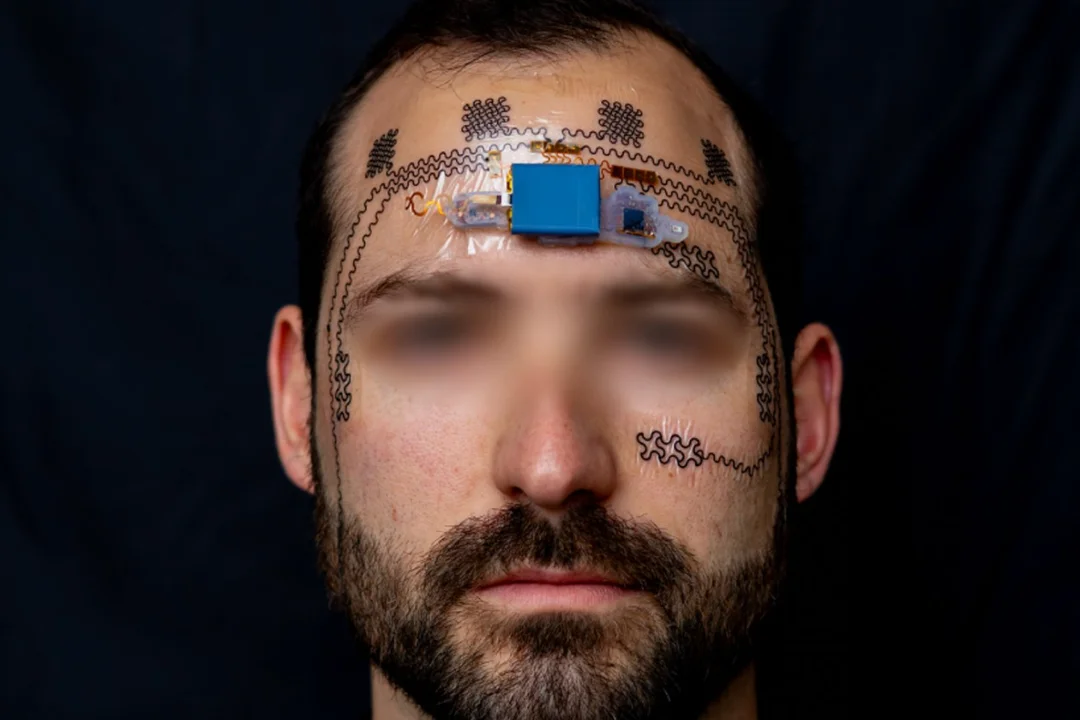
‘E-Tattoo’: The Future of Mental Workload Monitoring? New Device Aims to Track Stress in High-Pressure Jobs
Are you constantly feeling overwhelmed by your job? A new innovation might offer a solution: an "e-tattoo" designed to monitor your brainwaves and alert you when your mental workload is too high. This temporary electronic tattoo, developed by researchers at the University of Texas at Austin, promises to provide real-time insights into mental strain, potentially revolutionizing how organizations ensure the wellbeing of their workforce.
This innovative device, worn on the forehead and face, uses electroencephalography (EEG) to detect when the brain is under pressure. It monitors patterns of electrical activity and eye movements, offering a minimally invasive way to assess mental effort. Dr. Nanshu Lu, the study's lead author, emphasizes that 'technology is developing faster than human evolution', and our brain capacity can easily become overloaded. The e-tattoo aims to help individuals find their optimal mental workload for peak performance.

Currently, the gold standard for measuring mental workload is the NASA Task Load Index, a post-task questionnaire. However, the e-tattoo offers a significant advantage by delivering continuous, real-time data. Luis Sentis, a co-author of the research, highlights that while physical health monitoring is common, mental strain tracking has been lacking. This device could fundamentally change how workplaces approach employee wellbeing.
The e-tattoo consists of a small battery pack worn behind the ear and paper-thin sensors with wavy loops and coils for comfortable skin conformity. These sensors pick up electrical activity, similar to traditional EEG caps but at a fraction of the cost. A traditional EEG system can cost upwards of $15,000, while the e-tattoo’s battery and chips are estimated at around $200, with disposable sensor patches costing approximately $20 each.
In tests, participants completed memory tasks of increasing difficulty. Researchers observed a distinct pattern in brainwaves as cognitive demand rose: higher theta and delta wave activity, and decreased alpha and beta waves. A computer model, trained on this data, successfully distinguished between levels of cognitive strain, demonstrating the e-tattoo's predictive capabilities.
Dr. Lu envisions a future where the e-tattoo becomes a common household item. She also mentioned: “Previous studies indicated that the optimal mental performance occurs when the mental workload demand is not too low or too high,” said Lu. “When it’s too low, it’s very boring, and the people will just lose focus.” While acknowledging current limitations, such as reliance on hairless skin and challenges in expanding coverage, the team is working on integrating wireless ink sensors for scalp placement.
The potential applications of this technology are vast, ranging from pilots and surgeons to personalized learning and stress management. Could this 'mood ring for your face' be the key to preventing dangerous lapses in concentration and fostering a healthier, more balanced workforce?
What are your thoughts on the 'e-tattoo'? Would you wear one to monitor your mental workload? Share your opinions in the comments below!